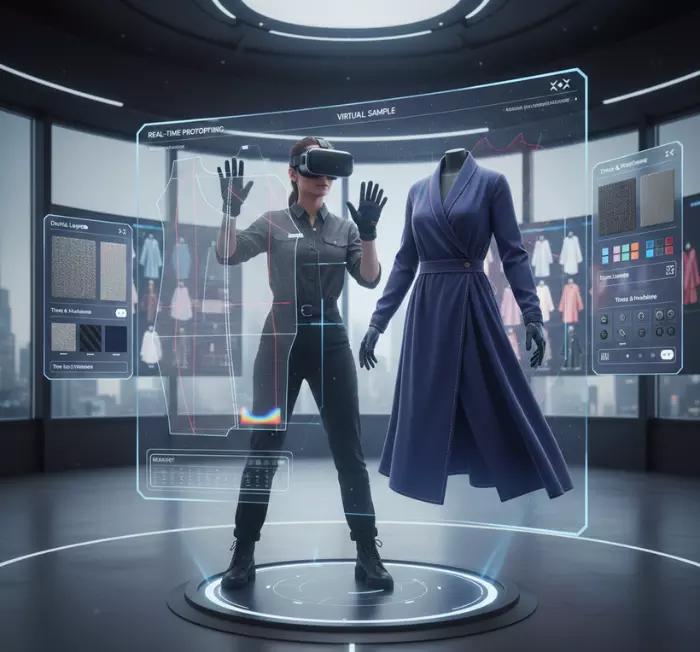Augmented reality fashion


Virtual try-on and fitting room


Personalized shopping experience
Virtual prototyping and sustainability

Frequently asked questions
Augmented reality in fashion is a technology that helps users to virtually try on clothing, accessories, or other visual information by providing them with digital AR overlays onto a user's real-world view with the help of their device’s camera, including smartphones, tablets, and computer desktops, which they can use as a "magic mirror," providing them with a customized and engaging online shopping experience.
Augmented reality can be used in fashion for multiple purposes, such as virtual try-ons, product visualization, and enhanced brand experiences, which will help brands to help their customers see how clothes, shoes, and makeup look on them virtually and provide them with a real-time shopping experience while sitting at home with the help of their device’s camera. It also helps brands to provide their customers with personalized recommendations, create interactive marketing, and reduce return rates, which will increase their online sessions on the e-commerce platform and boost user engagement on the website or app.
With the help of augmented reality technology, brands can add digital elements to the real world by offering their customers a virtual dress over their live camera feed, which will enhance the existing environment and provide them with a tailored experience. Meanwhile, virtual reality helps online sellers to create a completely digital, immersive environment, such as a virtual showroom or runway show, where they can provide their customers with a virtual tour of their physical store with the help of a headset.
By using augmented reality for online and e-commerce platforms, brands will get multiple benefits because it will help them to increase their revenue and become more sustainable by reducing miscellaneous costs of physical samples. Here are some advantages that online fashion brands and businesses get after using AR technology on their e-commerce stores and websites: Increase sales and conversion rates: It helps online sellers to provide their customers with enhanced shopping experiences that will help them to boost customer engagement and the likelihood of purchase by using AR overlays and 3D models on websites and stores. Reduce return rates: It helps brands to reduce the product return rate because it provides customers with a virtual overview of their customizations during virtual try-on, enabling them to make more informed shopping decisions. Lower costs and promote sustainability: It helps online sellers and businesses to reduce the cost of physical samples and logistics by introducing the feature of virtual prototyping and sampling to contribute to more sustainable practices. Enhance brand loyalty: It helps brands to opt for unique and innovative AR experiences that will help them to stand out in the market, attract tech-savvy consumers, and build stronger customer connections.
No, it is not possible for AR platforms to replace physical fitting rooms completely, as AR can reduce the dependency on physical fitting rooms by allowing virtual try-ons, whereas some shoppers still value the ability to touch and feel the material and have real-world interactions, which shows that AR will likely integrate with physical stores to help brands create a seamless hybrid shopping experience.
With the help of augmented reality technology, brands can create a blend of digital and physical shopping by integrating artificial intelligence technology to provide users with hyper-personalized recommendations while increasing the rise of digital-only fashion for avatars and continued advancements in sustainability through virtual tools, which will provide brands with tech-savvy future options to provide their customers with a sustainable and accessible way to explore new products anytime and anywhere.
















